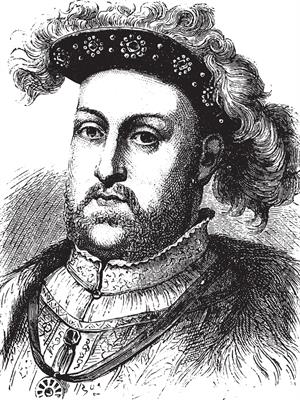PDF chapter test TRY NOW
Martin Luther and Reformation:
Martin Luther was a Professor of Theology at the Wittenberg University of Germany who later gained prominence in Renaissance history. The beginning of the 16^{th} Century witnessed a small movement of Theologians of Europe who went on to question the Catholic Principles and the Church.

Martin Luther
Augustine: He was a Philosopher of Germany who emphasised the supremacy of the Bible rather than the Church or its Religious heads.
Martin Luther visited Rome and was gutted by the lives led by the religious heads of the Church. The luxurious and corrupt officials of the Church started giving indulgences (Absolution from Sins) for money.
The Practice of Selling the Indulgences for Money was prohibited in Germany to maintain the sacrosanct image of the Catholic Church, but the officials continued the ill practice of Indulgence selling.
The “95 Theses”:
Martin Luther was a strong advocate of attaining salvation through divine activities and strong faith. Annoyed by the practice of the corrupt Church officials, he asked them to debate with him.
He also went onto write “The Disputation on the Power and Efficacy of Indulgences” which later came to be known as the “95 Theses”.
95 Theses: This is a list of 95 questions and proposals for debate given by Martin Luther to the Officials of the Catholic Church. He also posted this on the Wittenberg Church in 1517.
Troubling times of Luther:
The Question of Luther was widely circulated among the streets of Germany and later reached Rome. In 1518, the Church condemned the writing of Luther as it found them to be against the teachings of the Church.
The Second Papal commission of the Church levelled many charges against Luther as his writing and thoughts had brought great his reputation to the Church and its officials.
Papal Bull: This was a Public Decree issued by the Pope to punish the recalcitrant. In 1520, Pope Leo X issued the Papal bull to Excommunicate Luther from the Catholic Church.
Luther escaped the punishment and took asylum in the town of Eisenach in Wartburg Castle and continued his famous project of translating the New Testament into the German language, which took him 10 long years to complete.
The Revival of Luther’s ideals:
After his return to Wittenberg, Luther found his ideals gained some political mileage among different sections of the people. He also went on to state that the Bible can be read by everyone and not only by the Church.
He also called for the rejection of Ceremonies and Penances offered by the Church and asked the people to follow the faith and divinity to attain salvation.
Protestants: The Catholic Church branded the people who hated the Catholic laws which were imposed on them as Protestants.
His ideas were also supported by the Princes of many City-States and the Peasants, which led to the break from the Catholic Church and led to the establishment of the “Protestant Church”.
The Protestant Reformers:
The Lutheran Principles found their voices among the 16^{th} Century religious reformers who took his ideals as their foundation to oppose the dominance of the Catholic Church. Some of the important reformers are listed below.
1. Huldrych Zwingli:
He was a Swiss religious reformer who supported the principles of Luther and opposed the Church against the ceremonies and the Penance practices that they offered to the people.
2. John Calvin:
He belongs to Geneva, who also supported the idea of Luther by opposing the sale of Indulgences by corrupt Catholic officials. He also disagreed with the display of wealth by the Church officials. “Institutes of the Christian religion” was the book written by him.
3. King Henry VIII:

Henry VIII
The King’s split with the Church of Rome after the dispute regarding his marriage. Henry wanted to marry another girl for a son, who would succeed him in the throne, which the Pope opposed.
Irked by the actions of the Catholic Church, he severed his ties with Rome and established a new church called the “Anglican Church”, and took complete control of the Anglican Church.
Irked by the actions of the Catholic Church, he severed his ties with Rome and established a new church called the “Anglican Church”, and took complete control of the Anglican Church.
